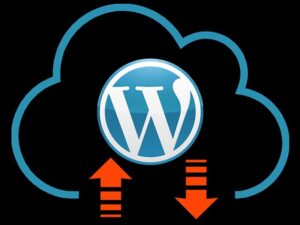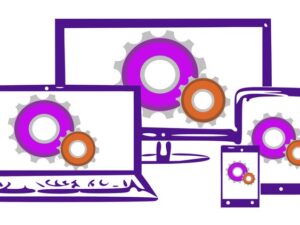PHP for Beginners
- Description
- Curriculum
- FAQ
- Reviews
- Grade

Are you wanting to get into Web development, but are not sure where to start?
So maybe you tried out some PHP and MySQL tutorials on Youtube, but found them too hard or outdated, and feel that you need a more comprehensive introduction.
Maybe you want to learn how to write PHP the right way. Secure code, OOP ready, and maximising re-usability as well as finding out about PHP programming standards to adopt and adhere too?
Perhaps your boss or client threw you in the deep end with a PHP and MySQL project, and you need to get up to speed with PHP, fast.
Whatever the reason, this course is for you.
This course is going to teach you how to create web applications using PHP and MySQL. Specifically, you will learn PHP and then create you own content management system (CMS) from scratch.
Why PHP?
PHP is the most popular website programming language in the world. The combination of PHP and MySQL is used extensively to create web applications, and developers with these key skills are in high demand. This course is going to teach you how to create web applications in PHP using the MySQL database.
What will you learn in this course?
You will learn how to create a dynamic website using the most popular website programming language in the world, PHP.
Dave Hollingworth, your instructor will teach you the PHP programming language, and take you through the steps to build a working CMS in PHP and MySQL from scratch.
Along the way, you will learn how to secure your code, how to write reusable, more maintainable code using programming standards, and how to structure your code using object-oriented programming techniques.
Dave will teach you the theory and then put the theory into practice when building the CMS.
You will also learn how to style your site using Bootstrap, how to integrate third-party code into your site, how to store data in a relational database and use this from PHP code, and more.
The course is very thorough, and goes through everything from installing a web server on your own computer, and editor to writing the code to create your web app. Towards the end of the course you will even learn how to upload the code and make your code live on the internet (very useful if you already have your own Hosting account). This is not necessary to complete the course though.
In summary, the course will teach you the core skills you need to know to become a productive PHP programmer.
Why this course?
Firstly, Dave has been creating web applications since 1999, when he created his first web application for a major insurance company. In addition he has been teaching IT for many years.
As a result, you will be learning the best practices from an experienced developer.
Dave will teach you the theory but then show how to put those techniques into practice. You will start building a CMS application from early on in the course and new techniques and theory are introduced as and when they’re needed to build the next part of the CMS.
New code is introduced one word or one line at a time, so you will never get bogged down or overwhelmed.
You will also learn real-world developer skills such as referring to and getting the most out of the documentation. This is an essential skill for developers to learn.
After completing this course, you will have the necessary skills to be able to create your own web applications with PHP and MySQL.
The sooner you sign up for this course, the sooner you will have the skills and knowledge you need to increase your job or consulting opportunities. PHP developers are in high demand!
Your new job or consulting opportunity awaits!
Why not get started today?
Click the Signup button to sign up for the course!
-
2Recommended Software Overview
In this video we'll look at the recommended software you need to install on your computer to start learning PHP.
-
3Install XAMPP on Windows
In this video we'll install the XAMPP web server, database server and PHP package on Microsoft Windows.
-
4Install XAMPP on MAC OS X
In this video we'll install the XAMPP web server, database server and PHP package on Mac OS X.
-
5Install XAMPP on Ubuntu Linux
In this video we'll install the XAMPP web server, database server and PHP package on Ubuntu Linux.
-
6Addendum: Visual Studio Code now the recommended editor
-
7Install Atom on Windows
In this video we'll install the open-source Atom code editor on Microsoft Windows.
-
8Install Atom on MAC OS X
In this video we'll install the open-source Atom code editor on Mac OS X.
-
9Install Atom on Ubuntu Linux
In this video we'll install the open-source Atom code editor on Ubuntu Linux.
-
10Write Your First PHP Code: Display a Message in Your Web Browser
In this video you'll write your first PHP code to display a message in the web browser. We'll also look at how websites and PHP work, sending data to the browser.
-
11Variables in PHP: What They are, How to Create Them, and How to Name Them
In this video you'll learn what variables are, and how to create them in PHP. We'll also look at how to name variables, including best practices.
-
12Basic Variable Types: Strings and Numbers
In this video you'll learn how to create variables containing different types, starting with strings and numbers, including integers and floating point values.
-
13Basic Variable Types: Boolean and Null
In this video you'll learn how to create variables containing boolean values (true and false) and the special null value.
-
14Perform Operations on Variables: Operators
In this video you'll learn how to perform operations on variables, such as mathematical operations like add, multiply and so on; and operations on strings like concatenation.
-
15Strings: Using Single or Double Quotes and Variable Interpolation
In this video you'll learn the difference between using single quotes and double quotes when creating a string variable. You'll also learn how to do variable interpolation, inserting a variable directly into a string.
-
16PHP concepts, variables and operators
Test your knowledge of basic PHP concepts, and variables and operators.
-
17Variables and Operators
-
18Introduction to Arrays: Create an Array and Access its Elements
In this video you'll learn what arrays are, the two methods for creating an array variable in PHP and how to access individual array elements
-
19Assign Manual Array Indexes and Create Associative Arrays
In this video you'll learn how to assign manual array indexes to array elements, and how to use strings as array indexes to create associative arrays.
-
20Create and Access Multidimensional Arrays
In this video you'll learn how to create multidimensional arrays, or arrays of arrays, and also how to access values inside them
-
21Process Each Element of an Array: foreach Loops
In this video you'll learn your first control structure in PHP: the foreach loop, and how to use this to process each individual element of an array when you don't know how many elements are in the array.
-
22Process the value and index of each array element using a foreach loop
In this video you'll learn how to use a foreach loop to access the index of each array element in addition to its value.
-
23Arrays
Test your knowledge of arrays in PHP.
-
24Arrays
-
25Run Code Conditionally: the if Construct
In this video you'll learn how to run code based on a condition, using an if statement. You'll also learn how to run alternative code by extending the if statement using an else block.
-
26Compare One Value to another: Comparison Operators
In this video you'll learn how to compare one value to another using the various comparison operators that PHP provides, for example equals, not equal, less than, greater than or equal to and so on.
-
27Run Code Multiple Times Based on a Condition: While Loops
In this video you'll learn how to execute a block of code multiple times based on a condition, using a while loop control structure.
-
28Run Code a Specific Number Of Times: For Loops
In this video you'll learn how to execute a block of code a specific number of times using a for loop.
-
29Add More Conditions to an If Statement Using Elseif
In this video you'll learn how to add more conditions to an if else statement using elseif blocks with additional conditions.
-
30Perform Different Actions Based on Different Conditions: The Switch Statement
In this video you'll learn how to use an alternative to many elseif statements: the switch statement. You'll learn how it's used to compare a variable or value to many different values and execute code based on that comparison.
-
31Control structures and comparison operators
Test your knowledge of control structures and comparison operators in PHP.
-
32Control structures and comparison operators
-
33The Language of Web Pages: an Introduction To Html
In this video you'll learn what HTML is, and how it's used to markup text to tell the browser how it's structured. You'll also learn the two types of HTML element, and how to add attributes to an HTML tag.
-
34Use Head and Body Elements to Structure An Html Document
In this video you'll learn how to structure an HTML document using head and body sections, and how to add the title to the top of the browser window using the title element.
-
35Structure the Content of your Page Using Heading and Paragraph Elements
In this video you'll learn how to structure the content using header elements and paragraphs.
-
36Give Text Emphasis or Importance Using the em and Strong Elements
In this video you'll learn how to emphasise or give text importance using the em and strong elements
-
37Display Ordered and Unordered Lists of Items
In this video you'll learn how to display lists of items in HTML, using ordered lists that have numbers, and unordered lists that have bullet points
-
38Insert Images Into an Html Document
In this video you'll learn how to insert images into an HTML document, including best practices for referencing the image
-
39Add a Link from One Page to Another Using a Hyperlink
In this video you'll learn how to create a link from one page to another in an HTML document, using the anchor tag.
-
40Add Semantic Structure to The Body of an Html Document
In this video you'll learn how to divide up your HTML code semantially using semantic sectioning elements like header, nav, main, article, section and so on.
-
41HTML
Test your knowledge of the basics of HTML.
-
42HTML basics
-
43Create Dynamic Content: Mixing HTML and PHP
In this video you'll learn how to mix PHP and HTML to display dynamic content inside an HTML document. You'll also learn how to use the PHP opening and closing tags inside an HTML document, and the shortcut syntax for echoing out a value.
-
44Use PHP Control Structures Mixed with HTML
In this video you'll learn the best way to mix PHP control structures like if, foreach and so on with HTML, using an alternative syntax where necessary.
-
45Make HTML More Readable: Use Whitespace and Comments
In this video you'll learn how to make your HTML documents easier to read by using whitespace characters (spaces, tabs, newlines and so on) and comments
-
46Addendum: changes to the available resources in the following video
A temporary addendum describing a change to the following video.
-
47Make PHP Easier To Maintain: Use Comments and Coding Standards
In this video you'll learn how to make your PHP code more maintainable and portable by using comments and coding standards, such as PSR-2
-
48Mixing PHP and HTML
Test your knowledge of mixing PHP and HTML.
-
49Mixing PHP and HTML
-
50Where to Store Data in a Dynamic Website: An Introduction to Databases
In this video you'll learn why we store data in a dynamic website in a database, and how this relates to the web server and PHP.
-
51Access the Database Server Using phpMyAdmin And Create a Database
In this video you'll learn how to use the phpMyAdmin tool to connect to the database server and create a new database, ready to store data.
-
52Use Tables to Store Structured Data in a Database
In this video you'll learn how structured data is stored inside a relational database, and you'll use phpMyAdmin to create a new table to store articles. You'll also learn best practices for naming tables inside a database.
-
53Select Some Data from The Database: An Introduction to Sql
In this video you'll learn how to access data in the database using structured query language, or SQL. You'll learn how to use the SELECT statement to select all or some columns, and how to use the WHERE clause to restrict the data returned based on one or more conditions.
-
54Using Indexes: Make Queries Faster and Order the Result Set
In this video you'll learn how to use indexes to make queries faster when selecting data using the SELECT statement in SQL. You'll also learn how to return the results ordered by one or more columns using the ORDER BY clause.
-
55Connect to the Database from PHP
In this video you'll learn how to connect to a database from a PHP script using MySQLi.
-
56Query the Database from PHP And Get the Results
In this video you'll learn how to send an SQL query to the database from PHP and how to get the results back to display them.
-
57Combine PHP and HTML to Show a Formatted List of Articles
In this video you'll combine PHP and HTML to retreive some data from the database using PHP, and display it in the browser using HTML to format it.
-
58Databases
Test your knowledge of using databases with PHP.
-
59Databases - connecting and selecting data
-
60Add a New Page to Show a Single Article
In this video you'll learn how to add another page, this time to select and display one record from the database instead of several. You'll learn how to display a message if the record isn't found in the database.
-
61Passing Data in the URL: Send the Article ID Using the Query String
In this video you'll learn how to pass data to a script in the URL using the query string, and how to access it in PHP using the $_GET superglobal.
-
62Avoid SQL Injection: Validate the ID Passed in from the Query String
In this video you'll learn what an SQL injection attack is, and how to avoid it for simple values in SQL
-
63Don't Repeat Yourself: Extract Repeated Code to a Separate File
In this video you'll learn how to extract repeated code out into a separate file, and how to include that file in another script. You'll also learn the difference between include and require, and include_once and require_once.
-
64Addendum: changes to the code in the following video
A temporary addendum describing a change to the following video.
-
65Organise and Secure Access to the Included Files
In this video you'll learn how to use an .htaccess file to secure access to an included file
-
66Multiple pages in PHP
Test your knowledge of adding multiple pages to PHP; how to secure them and how to avoid database security issues.
-
67Multiple pages in PHP
-
68Getting Data From the User: An Introduction to Forms in HTML
In this video you'll learn how to create a form in HTML so the user can submit data to a PHP script. You'll also learn how to retrieve that data in PHP.
-
69Change the Method the Form Uses to Send its Data: get vs post
In this video you'll learn what the two different form methods are, GET and POST, how to use them and what they are for.
-
70Addendum: datetime and datetime-local input types
An addendum describing a change that affects the next lecture.
-
71Get Different Types of Data from the User: Basic Input Types
In this video you'll learn how to create basic input types in a form: text, password, number and so on. You'll also learn what these look like in different browsers, and what happens when a browser doesn't support one of the more recent types introduced in HTML5.
-
72Access Data from the form on the Server
In this video you'll learn how to access the data submitted from the form in PHP. You'll also learn how to submit a form using button elements, and how to name the form controls and access specific inputs in a script on the server.
-
73Add a Multi-line Text Control: the textarea Element
In this video you'll learn how to create an input control that has multiple lines of text: the textarea element
-
74Present a Fixed List of Options: the Select Element
In this video you'll learn how to use a select element to present a fixed list of options in a form, using option elements inside the select element
-
75Toggle an Option on or off: checkboxes
In this video you'll learn how to use inputs of type checkbox to present an option that can be toggled on or off. You'll also learn how the values from checkboxes are submitted, and the best way to use multiple checkboxes in a form.
-
76Select only one Option from a List: Radio Buttons
In this video you'll learn how to use radio inputs to present a list of options where only one option can be selected at once, deselecting other options.
-
77Add an Accessible Caption to Each Input: the Label Element
In this video you'll learn how to add a text caption to an input that is associated to that input, which is better for accessibility. You'll also learn how to check checkboxes and radio buttons by clicking the text next to that control using label elements.
-
78Make the Form Easier to Use: fieldsets and placeholders
In this video you'll learn how to make the form easier to use by grouping controls together in fieldsets, and how to use placeholder text to give the user a hint as to what to put inside a control.
-
79Common form Control Attributes: readonly, disabled and autofocus
In this video you'll learn about common form attributes and how they affect input controls: making them readonly, disabling them, and setting the focus automatically when the form is loaded.
-
80Validate Input Using HTML5 form Validation
In this video you'll learn how to validate the data in a form before it's submitted using HTML5 form validation attributes. You'll also learn how inputs of different types automatically validate the type of data entered into them depending on the type of the control.
-
81Forms in HTML
Test your knowledge of HTML forms.
-
82HTML Forms












